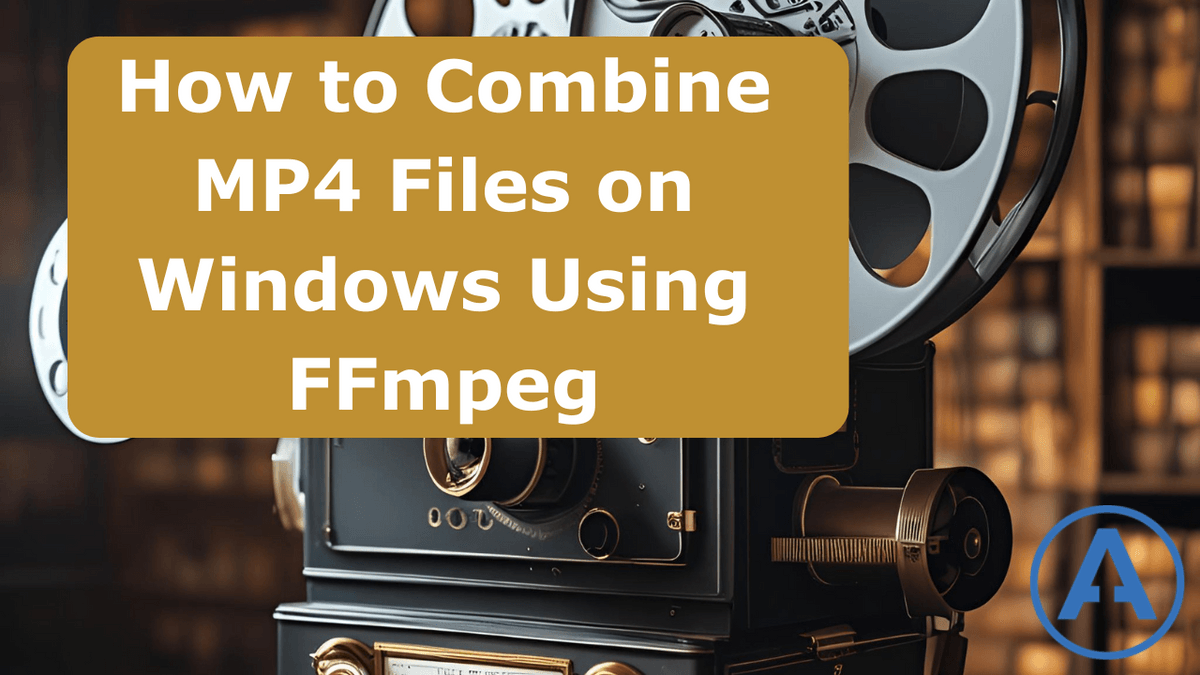How to Combine MP4 Files on Windows Using FFmpeg
Date Published: 24 July 2025

Merging multiple MP4 files into one can be useful when working with ripped DVDs, split movie parts, or recorded gameplay. On Windows, the simplest and most flexible tool for this task is FFmpeg — a powerful open-source utility that can join, convert, and manipulate video files.
This guide walks you through installing FFmpeg, preparing your files, and performing a lossless merge (no quality loss).
1. Install FFmpeg with Winget
Windows 10/11 includes the winget package manager, which makes installing FFmpeg simple:
winget install Gyan.FFmpegAfter installation, close and reopen your PowerShell or Command Prompt so the new PATH settings take effect. Verify with:
ffmpeg -versionYou should see version details confirming it’s ready to use.
2. Prepare the Files
Rename to Remove Spaces
FFmpeg’s concat method works best with simple filenames. Rename your MP4s to remove spaces and special characters:
Rename-Item "Long File Part 1.mp4" "Long_File_Part_1.mp4"
Rename-Item "Long File Part 2.mp4" "Long_File_Part_2.mp4"(Alternatively, you can quote filenames with spaces, but renaming is easier.)
3. Create a File List
Create a text file named file_list.txt in the same folder as your videos. Its contents should be:
file 'Long_File_Part_1.mp4'
file 'Long_File_Part_1.mp4'This tells FFmpeg which files to concatenate and in what order.
4. Combine the Files
Run the following command:
ffmpeg -f concat -safe 0 -i file_list.txt -c copy Long_File_Combined.mp4This creates Long_File_Combined.mp4 by stitching the two parts together without re-encoding (no quality loss).
Note: This process still copies all frames into a new file, so large videos will take a few minutes to write to disk.
5. Verify the Result
Play the new combined file in your preferred media player. If playback is seamless, you can delete the original split parts if desired.
You can also delete file_list.txt now if you want.
Troubleshooting
-
Mismatched Codecs or Bitrates: If FFmpeg errors about incompatible streams, you’ll need to re-encode:
ffmpeg -i Long_File_Part_1.mp4 -i Long_File_Part_2.mp4 -filter_complex "[0:v][0:a][1:v][1:a]concat=n=2:v=1:a=1[outv][outa]" -map "[outv]" -map "[outa]" Long_File_Combined.mp4 -
Subtitles or Extra Streams: Stripping unnecessary streams (e.g., subtitles) can simplify merging:
ffmpeg -i input.mp4 -map 0:v -map 0:a -c copy stripped.mp4
Why FFmpeg?
- Free & Open Source
- Easily installed via winget (or other tools)
- Lossless Merge when files are encoded identically
- Supports Almost Any Format (MP4, MKV, MOV, etc.)
- Cross-Platform (Windows, macOS, Linux)
Summary
Combining MP4 files on Windows is straightforward with FFmpeg:
- Install FFmpeg via Winget.
- Rename files to remove spaces.
- Create
file_list.txtwith the file order. - Run the concat command with
-c copy. - Verify and enjoy your merged video.
This process is fast, avoids quality loss, and works reliably for most video sources.
Tags - Browse all tags
Category - Browse all categories

About Ardalis
Software Architect
Steve is an experienced software architect and trainer, focusing on code quality and Domain-Driven Design with .NET.
